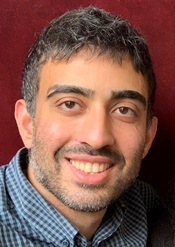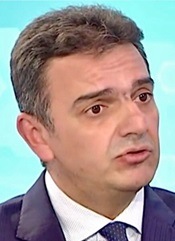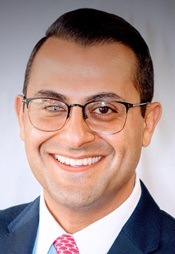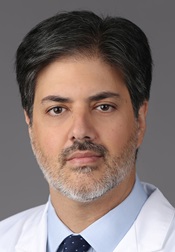The closing weeks of 2023 saw fresh findings comparing general anaesthesia (GA) to sedation in stroke thrombectomy disclosed for the first time, with leading researcher Peng Roc Chen (UTHealth Houston, Houston, USA) presenting results from the SEGA trial at the Society of Vascular and Interventional Neurology (SVIN) annual meeting (16–18 November, Miami, USA). While the results leaned towards favouring GA—and were described by SVIN meeting chair Fawaz Al-Mufti (New York Medical College, New York, USA) as “groundbreaking”—some members of the neurointerventional community remain unconvinced, and have warned against placing too much stock in these data. Here, NeuroNews gauges the global reaction to SEGA and the evidence it adds to current debates surrounding GA versus sedation.
What are your thoughts on the SEGA trial and its results?

“The authors of the SEGA trial are to be commended for their important achievement in the study of anaesthesia approaches in the setting of endovascular therapy for acute ischaemic stroke. This trial, however, does not clearly indicate what the optimal approach should be in each stroke patient, as local resources, associated factors limiting each anaesthetic approach, and individual operator preferences, are likely to persist. Furthermore, the use of anaesthesia approaches will likely vary by exact site of proximal versus distal occlusion, or posterior circulation ischaemia. Randomised studies of these questions are also fraught with logistic difficulties and inherent biases.”
– David Liebeskind (University of California Los Angeles [UCLA], Los Angeles, USA)

“The results of the SEGA trial so far push in favour of GA for improved rates of recanalisation and functional outcome over non-GA, which is further supported by similar conclusions from a recent systematic review and meta-analysis of seven randomised controlled trials (RCTs), published by Campbell et al in Neurology in 2023. At the Royal London, we currently perform mechanical thrombectomy more so under local anaesthesia with sedation rather than GA for multifactorial reasons. Firstly, the evidence previously showed equivocal and potential inferior outcomes with GA compared to non-GA. Secondly, with the potentially short procedure time, it was felt that the quicker door-to-recanalisation times could be achieved with non-GA. Thirdly, GA potentially requires a longer postprocedural recovery time, which poses a further burden on our already overstretched recovery unit and bed availability. It could also delay theatre turnaround for any back-to-back thrombectomy cases and repatriation.
With these new data favouring GA, we are beginning a shift towards GA for most mechanical thrombectomies—but there are a few limiting factors in implementing this in practice. Firstly, delivering GA safely and quickly can be difficult for several reasons, including inexperience of GA in thrombectomy cases, blood pressure control (which is paramount), high-risk patients, and external transfers where clinical baseline information can be limited. An advantage of GA, however, is that the technical aspect of the procedure is often easier, as the patient is not moving around, which could make retrieving distal clots potentially safer. And, if the distal clot-retrieval trials show benefit, then GA may become the norm. Furthermore, there is now a greater drive to achieve TICI [thrombolysis in cerebral infarction] 2c/3 more often—as opposed to TICI 2b or less, which may have been previously acceptable—and GA may be helpful in this regard. We hope, by shifting to routine GA for mechanical thrombectomy in our practice, we will be able to streamline the process, expand our recovery unit, and improve outcomes for our thrombectomy patients.”
– Rukhtam Saqib (Royal London Hospital, London, UK)
How significant are these findings in terms of the new evidence they add to debates of GA versus sedation in stroke thrombectomy?

“While these results indicate that GA may be associated with a higher likelihood of functional independence and better angiographic reperfusion, it is crucial to approach the conclusions cautiously, since the detailed study data are not yet published. Previous studies have indicated that the sedation method may not significantly impact treatment outcomes. The observed differences in this study could be attributed to lower reperfusion rates with sedation. Therefore, we await the full publication of the study to gain a deeper understanding of the causes behind these differences in reperfusion rates.”
– Panagiotis Papanagiotou (University of Athens, Athens, Greece)

“I applaud Dr Roc Chen and the SEGA team for their efforts; however, I maintain that clinical equipoise persists. Two distinct camps exist, each steadfast in their belief in the validity of their respective data from multiple trials. Currently, I am inclined to think that—if GA is readily available at your institution and does not cause a delay exceeding eight minutes in arterial puncture—there may be potential advantages. Unfortunately, at my institution, the delays caused by anaesthesia are more than double.”
– Ameer Hassan (Valley Baptist Medical Center, Harlingen, USA)

“In the SEGA trial, focusing on anterior circulation and LVO [large vessel occlusion], minimal statistical differences between GA and conscious sedation were observed for clinical outcomes, with close-to-zero differences in angiographic outcomes. These findings align with recent studies, such as the 2022 French GASS RCT. While unlikely to prompt a global shift in practice, the SEGA trial raises a lot of interest about identifying patient subgroups benefitting most from GA. I believe these results suggest that tailoring anaesthetic protocols to local practices, occlusion site and patient clinical status is feasible, and probably commendable.”
– Jildaz Caroff (Bicêtre Hospital, Le Kremlin-Bicêtre, France)
In your own practice, do you favour GA or sedation? And, are the results of the SEGA trial likely to influence your approach significantly moving forward?

“In our centres, we have recently moved away from ‘conscious sedation for all thrombectomies’ and treat the majority of our acute stroke patients under GA. The reason for that is that—although the preparation takes longer—the recanalisation procedure itself appears to be faster and more effective, especially in severely affected, less cooperative patients. I am happy with the results of SEGA, which have proved that patients benefit from recanalisation under GA and thus support us in our approach. For the future, there is still a lot to learn in terms of an optimal anaesthesiologic regimen for our patients including medication, blood pressure management etc.”
– Franziska Dorn (Ludwig Maximilian University of Munich, Munich, Germany)

“Initial retrospective studies suggested that patients undergoing GA for endovascular treatment of acute ischaemic stroke had worse neurological outcomes compared with patients receiving conscious sedation. Concerns surrounding airway manipulation early in the COVID pandemic swayed our practice toward early, elective intubation for all patients with acute ischaemic stroke who were to undergo endovascular therapy at Johns Hopkins. The merged results of the six major RCTs comparing general endotracheal anaesthesia to conscious sedation (SIESTA, AnStroke, GOLIATH, CANVAS, Ren et al, and GASS) examined by Lee and colleagues in their 2022 meta-analysis published in Frontiers in Neurology sealed the deal for us. Proceduralists at our group overwhelmingly prefer GA for endovascular therapy. Common justification for this preference is the better-quality images that are attained during breath holds in muscle relaxed patients, which leads to improved recanalisation time and reperfusion success rates. The results of SEGA provide scientific evidence supporting our experience and practice.”
– David Mintz and Kate Rosenblatt (Johns Hopkins Medical Institutes, Baltimore, USA)

“The SEGA trial results add important information to a significant amount of recent data from RCTs (SIESTA, AnStroke, GOLIATH) that, if not conclusively demonstrate superiority of GA over non-GA, at least demonstrate non-inferiority. The use of GA around the world is dictated by several different factors, including availability, timing, institutional setup, preference etc. In our institution, we have been using general anaesthesia for all our thrombectomies for over 10 years. We see significant advantages of using GA for thrombectomy cases including paralysis and blood pressure control (kept on the higher side before recanalisation), which—in our opinion—makes the procedure technically safer with a higher chance of recanalisation, particularly in more complex or difficult cases (tortuous anatomy, hard clot etc.), or cases that require stenting. I am glad to see the results of several RCTs pointing towards the same direction.”
– Guilherme Dabus (Baptist Health South Florida, Miami, USA)












